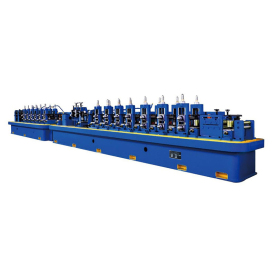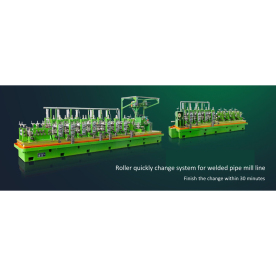[High-Performance Annealing Machine]The Evolution and Advantages of High-Performance Annealing Machines in Modern Manufacturing Processes
News 2024-12-12

The Evolution and Advantages of High-Performance Annealing Machines in Modern Manufacturing Processes
Annealing is a crucial thermal treatment process that involves heating metals and alloys to a predetermined temperature, followed by a controlled cooling phase. The primary purpose of this process is to eliminate internal stresses, enhance ductility, and improve the metallurgical properties of the materials. Traditionally performed in batch systems, the need for more efficient methods has led manufacturers to explore High-Performance Annealing Machines that can perform these tasks with greater speed and precision.
One significant advantage of High-Performance Annealing Machines is their capacity to process larger volumes of materials in shorter time frames. Traditional annealing methods often require extended heating and cooling periods which can lead to production bottlenecks. In contrast, modern high-performance machines utilize advanced heating technologies, including induction heating and infrared heating, to achieve the necessary temperatures rapidly. These methods not only shorten processing times but also reduce energy consumption, making them a more sustainable choice for manufacturers.
Moreover, the precision of temperature control in High-Performance Annealing Machines is a game-changer for manufacturers. Advanced control systems, often integrated with real-time monitoring capabilities, allow operators to maintain exact temperature profiles throughout the annealing cycle. This precision is crucial as it ensures uniform treatment of the material, leading to consistent product quality. In industries where material properties are critical—such as aerospace or medical device manufacturing—the ability to maintain strict temperature tolerances can significantly reduce the risk of defects and improve overall product reliability.
Additionally, High-Performance Annealing Machines are designed with automation in mind. The integration of computer-controlled processes allows for the efficient scheduling of multiple annealing cycles, reducing human error and oversight while increasing throughput. This feature is particularly beneficial for environments where lower skilled labor is prominent, allowing companies to maximize productivity without compromising quality. Automation also enables manufacturers to implement predictive maintenance strategies, further minimizing downtime and maintenance costs.
Furthermore, the adaptability of High-Performance Annealing Machines makes them suitable for various applications. They are capable of treating a wide range of materials including steel, aluminum, and specialty alloys, giving manufacturers the flexibility to meet diverse product requirements. Customization options allow companies to tailor the machinery to their specific materials and product designs, thus enhancing overall process efficiency.

The Evolution and Advantages of High-Performance Annealing Machines in Modern Manufacturing Processes

The Evolution and Advantages of High-Performance Annealing Machines in Modern Manufacturing Processes
In conclusion, the High-Performance Annealing Machine represents a significant advancement in the thermal treatment processes used in various manufacturing sectors. Its capacity for speed, energy efficiency, precision, and adaptability makes it a valuable asset for companies aiming for enhanced productivity and product quality. As the manufacturing landscape continues to evolve, embracing such advanced technologies will be vital for companies striving to maintain their competitive edge in a challenging market. By investing in High-Performance Annealing Machines, manufacturers can not only streamline their operations but also pave the way for future innovations and growth.
